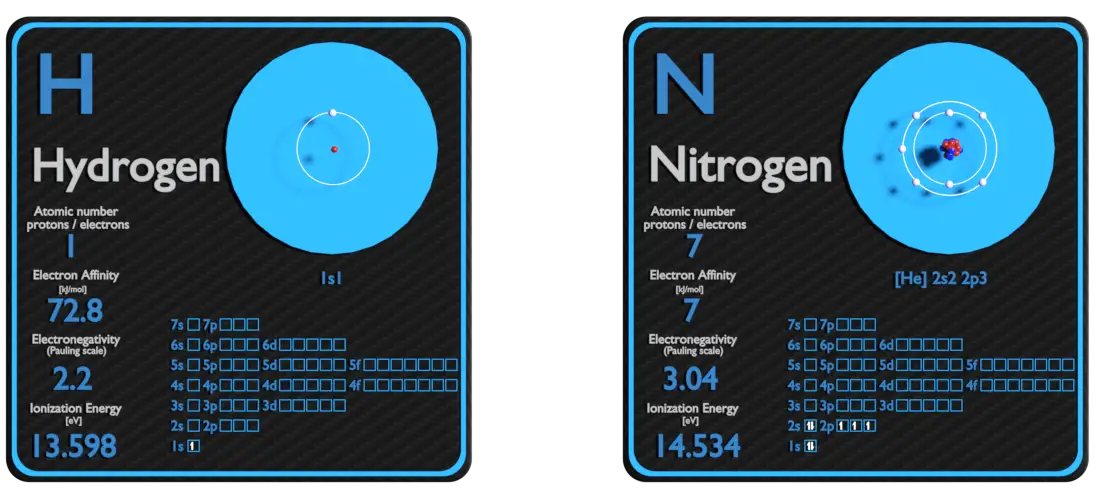This article contains comparison of key thermal and atomic properties of hydrogen and nitrogen, two comparable chemical elements from the periodic table. It also contains basic descriptions and applications of both elements. Hydrogen vs Nitrogen.

Hydrogen and Nitrogen – About Elements


Source: www.luciteria.com
Hydrogen and Nitrogen – Applications
Hydrogen
Hydrogen is versatile and can be utilized in various ways. These multiple uses can be grouped into two large categories. Hydrogen as a feedstock. A role whose importance is being recognized for decades and will continue to grow and evolve. The largest single use of hydrogen in the world is in ammonia manufacture, which consumes about two-thirds of the world’s hydrogen production. Hydrogen is versatile and can be utilized in various ways. These multiple uses can be grouped into two large categories. Hydrogen as a feedstock for further chemical processes. A role whose importance is being recognized for decades and will continue to grow and evolve. And hydrogen as an energy carrier. Hydrogen is also commonly used in power stations as a coolant in generators due to a number of favorable properties that are a direct result of its light diatomic molecules.
Nitrogen
Nitrogen in various chemical forms plays a major role in large number of environmental issues. The applications of nitrogen compounds are naturally extremely widely varied due to the huge size of this class: hence, only applications of pure nitrogen itself will be considered here. Two-thirds of nitrogen produced by industry is sold as the gas and the remaining one-third as the liquid. In metallurgy, nitriding is a case hardening process in which the surface nitrogen concentration of a ferrous is increased by diffusion from the surrounding environment to create case-hardened surface. Nitriding produces hard, highly wear-resistant surface (shallow case depths) of product with fair capacity for contact load, good bending fatigue strength and excellent resistance to seizure. Synthetically produced ammonia and nitrates are key industrial fertilisers, and fertiliser nitrates are key pollutants in the eutrophication of water systems. Apart from its use in fertilisers and energy-stores, nitrogen is a constituent of organic compounds as diverse as Kevlar used in high-strength fabric and cyanoacrylate used in superglue.
Hydrogen and Nitrogen – Comparison in Table
| Element | Hydrogen | Nitrogen |
| Density | 0.00009 g/cm3 | 0.00125 g/cm3 |
| Ultimate Tensile Strength | N/A | N/A |
| Yield Strength | N/A | N/A |
| Young’s Modulus of Elasticity | N/A | N/A |
| Mohs Scale | N/A | N/A |
| Brinell Hardness | N/A | N/A |
| Vickers Hardness | N/A | N/A |
| Melting Point | -259.1 °C | -209.9 °C |
| Boiling Point | -252.9 °C | -195.8 °C |
| Thermal Conductivity | 0.1805 W/mK | 0.02598 W/mK |
| Thermal Expansion Coefficient | — µm/mK | — µm/mK |
| Specific Heat | 14.304 J/g K | 1.04 J/g K |
| Heat of Fusion | 0.05868 kJ/mol | (N2) 0.7204 kJ/mol |
| Heat of Vaporization | 0.44936 kJ/mol | (N2) 5.56 kJ/mol |











